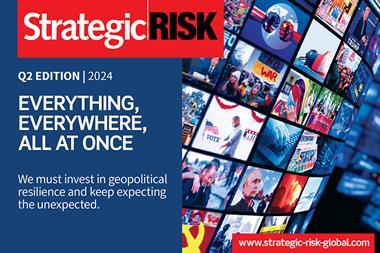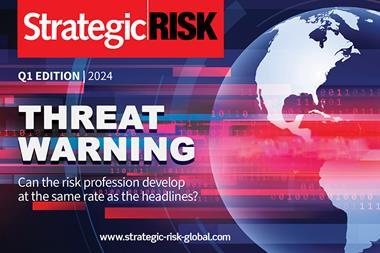The heightened and complex risk landscape will test the creativity of insurers and risk managers
As the global economy emerges from the pandemic, business leaders believe they will be more resilient in 2022.
Most organisations have leveraged the pandemic to improve operations from the ground up leading the vast majority (84%) of business leaders to believe they will be more resilient in 2022.
But such high levels of optimism do not mean that business risks have gone away. Indeed, over a third expect that supply chain and business interruption concerns will dominate boardroom agendas and that employer and reputation risks will prove challenging during the coming year.
Compounding the problem, industries that have been hardest hit during the pandemic, including health, retail, travel, education and manufacturing are at risk of resilience fatigue – facing ongoing high levels of staff shortages, complex logistic challenges and the need to re-shape the workplace culture to respond to different staff, supplier and client expectations.
Against this backdrop, there can be little doubt that this complex and highly integrated risk environment will drive a sharp rise in claims severity, with settlement amounts far exceeding previous levels.
As this threat grows, clients will likely demand improved granularity around how insurance will respond, and the industry will want to be clear it is not inadvertently including COVID-19 risk in policies.
Covid is supercharging employment risk
One area where Covid-19 is expected to have a significant impact on business risk profiles is employer liability.
In a world where there are no longer any reliable ‘right’ answers, we may expect to see an increase in COVID-19 claims, including challenges over vaccine mandates in the workplace, wrongful termination, discrimination claims and even harassment in terms of working practice expectations.
It is concerning therefore that our research reveals that employer risk is ranked top by a median of just 11% of business leaders on both sides of the Atlantic.
Our view is that cases will likely start with employment practices liability and discrimination issues. But if the trend becomes more widespread, this could easily morph into management liability or boardroom issues as we could potentially see COVID-19-related class actions.
ESG reporting is a minefield
Rising stakeholder expectations around environmental, social and governance (ESG) concerns and new reporting standards are another area of complex risk that is re-shaping corporate strategy and re-setting relations with investors and shareholders.
Pressure to provide better guidance about ESG credentials is both an opportunity and a risk. On the one hand new regulations may clarify what is expected of companies.
On the other they pose risks that businesses, in their haste to comply with new regulations, exaggerate their green credentials or release inaccurate, misleading or misstated information.
Any companies that miss regulatory or self-imposed targets could potentially face litigation and even companies that succeed in achieving their ESG goals will face the risk of being accused of greenwashing.
This is an area we are increasingly conscious of in our underwriting and has led us to review our modelling to anticipate ‘greenwashing’ as a possible problem area going forward.
Supply chain concerns dominate
Supply chain risk is ranked high by business leaders in our research, and most business leaders believe that resilience levels are relatively low.
But with many companies already reporting a rise in customer complaints, delays to product launches and the consequent loss of regular customers in 2021, there is a clear threat that companies which are badly prepared will see valuation impacts in 2022.
Supply chain challenges, labour shortages and rising costs present real potential to drive claims activity as well as resulting losses. A major concern is reliance on specialised staff, who may be over-stretched or burnt out, or who may have to have their role covered by under-trained substitutes, feeding into a worsening claims picture.
When valuations fall, it is inevitable that shareholder actions against directors will follow, something that may push supply chain issues even higher up the boardroom agenda as we look further ahead.
Traditional supply chain insurances such as contingent business interruption covers may offer some respite from lost income or extra expenses - but the real value of insurance is likely to come from more than traditional risk transfer policies.
Increasingly it is our view that business will need risk management and prevention advice and support alongside a more traditional financial recompense approach to insurance to address the challenge of an overstretched supply chain.
Risks are complex and ‘leaky’
Against this backdrop, it is inevitable that the risk of perceived corporate mismanagement will remain elevated, putting corporate reputations very firmly under the spotlight and raising expectations of insurers to step in and help mitigate a raft of business risks.
These difficult market conditions will test the creativity of the insurance market and the resolve of some market players.
We anticipate working with insureds across industries to pool and interrogate data that in time may support a hub of centralised services adding risk management value, surrounded by more traditional risk transfer mechanisms.
This kind of integrated response will be essential as insureds look for long-term insurance partners with the expertise and insight to help them navigate the shifting sands of liability in what as the pandemic recedes is an undeniably a more complex business risk landscape.
About Beazley’s Risk & Resilience research
During January and February 2021 Beazley commissioned research company Opinion Matters to survey the opinions of over 1,000 business leaders and insurance buyers of businesses based in the UK and US with international operations.
Bethany Greenwood, is global head of cyber and executive risk at Beazley




















No comments yet